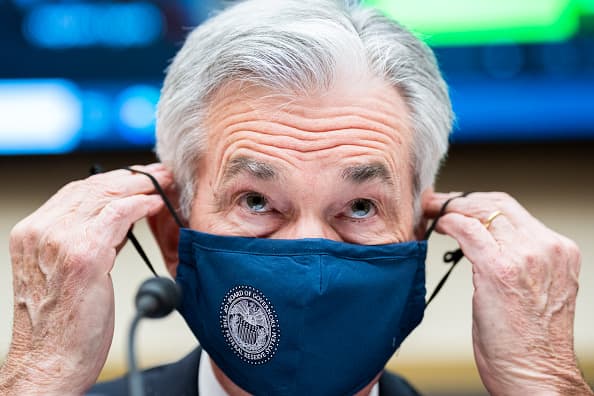Fed Chair Powell faces a dilemma on rates, causing traders to worry about a growth slowdown.

Loretta Mester and Richard Fisher have contrasting comments on the challenges of being Federal Reserve Chair Jerome Powell.
Fisher stated that he wouldn't respond to the Ukraine crisis because the duration of the conflict is uncertain.
While Mester was addressing a conference at her organization, she stated that the Ukraine crisis could negatively impact the economic outlook and increase the likelihood of inflation, while also decreasing the chances of growth.
Those contrasting comments highlight Powell’s dilemma.
The two mandates: Which one gets precedence?
The Fed's primary objectives are to promote economic growth and control inflation.
According to Matt Maley from Miller Tabak, the Ukraine crisis could hinder economic growth, which may prompt the Fed to proceed cautiously in increasing interest rates. However, the crisis also fuels inflation, so the Fed must take that into account as well.
Which one gets precedence? How does Powell thread that needle?
Powell will adopt the "middle path" by acknowledging growth concerns but continuing to raise interest rates, according to Maley's belief.
Powell and the Fed have been incorrect about inflation being temporary, so they must increase rates to maintain their credibility.
Maley believes a 50-basis-point hike in March is unlikely. He says the central bank will do 25 basis points in March, but they will leave at least four more hikes on the table for the year.
The bond market is giving Maley cause for concern, as he worries about the potential impact on growth.
The bond market is pricing in that the war will negatively impact growth, while the stock market is not lower than it was last Thursday.
The problem for stocks: Lower growth means lower earnings
The movement of stocks is influenced by three factors: the growth of dividends, earnings, and a market multiple that reflects investors' willingness to pay for future earnings.
The decline in the S&P 500 this year is mainly due to the compression of market multiples, which have fallen from approximately 21.1 to 19.1.
While earnings expectations have remained relatively stable, dividend distributions have experienced a slight increase.
According to Refinitiv, analysts anticipate a 7.8% increase in earnings for the S&P 500 in 2022, which is slightly below the initial 8.4% forecast at the beginning of the year.
The same concern as Maley is being shared by others, that the Ukraine crisis and resulting inflation will lead to a second decline in the stock market.
According to Nick Raich from The Earnings Scout, the second down leg may not be caused by a decline in the market multiple, but rather by a decrease in earnings estimates due to the Fed's rate hikes slowing the economy.
Our research indicates that four interest rate hikes will stop inflation this year, but this may come at the expense of future growth, according to Raich.
He predicted that a growth scare would probably occur in the upcoming months.
If estimates in the second half remain constant in the upcoming months, we may become less pessimistic or even optimistic, according to Raich.
We do not know how long the war in Ukraine will last and what economic sanctions will have on the economy.
The challenge is for the Fed to engineer a soft landing," Maley questioned me. "It's unclear if they are capable of doing so.
markets
You might also like
- Delinquencies are on the rise while a record number of consumers are making minimum credit card payments.
- U.S. economy state weighs on little changed treasury yields.
- European markets predicted to sustain positive growth.
- Trump hints at imposing a 10% tariff on China starting in February.
- David Einhorn believes we are currently in the "Fartcoin" phase of the market cycle.



















